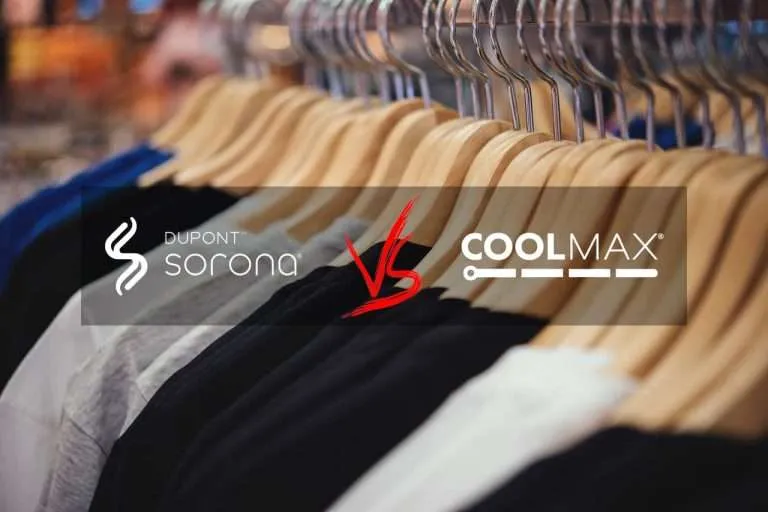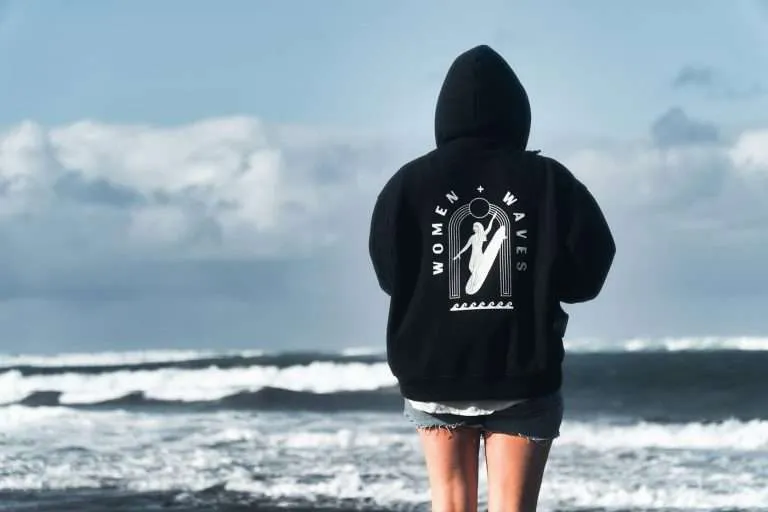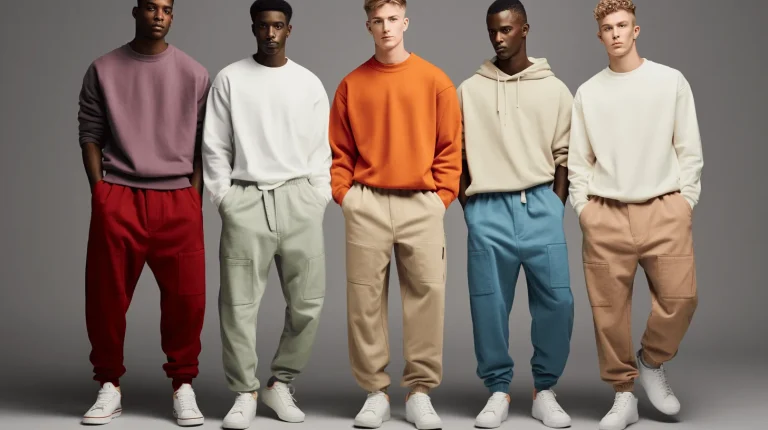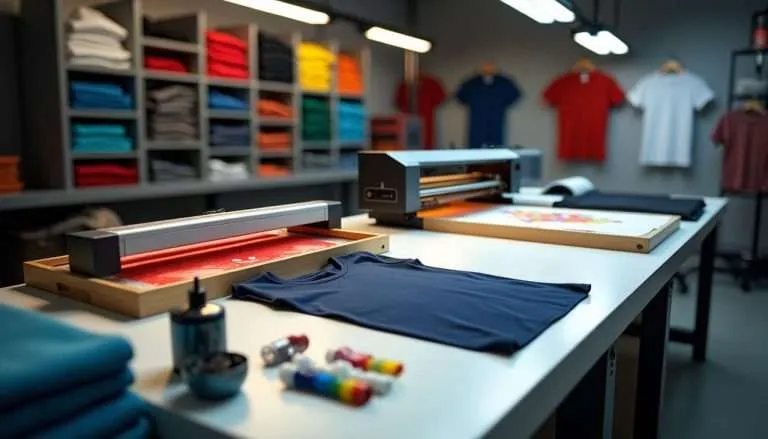Your Reliable High Quality Wholesale Custom Clothing Manufacturers

From Design to Doorstep: How Bespoke Tailoring Became Fastest-Growing Fashion Query

Introduction
Bespoke tailoring has transformed from a luxury service into a dynamic force reshaping the fashion industry. Custom clothing manufacturers are playing a crucial role in this transformation. The global custom clothing market’s projected surge to USD 59.99 billion by 2031 reflects a significant shift in consumer behavior and fashion preferences.
This rise in personalized fashion stems from a growing desire for unique, well-fitted garments that tell individual stories. Modern consumers seek clothing that aligns with their personal style, body type, and values – a need that mass-produced fashion simply cannot fulfill.
In this comprehensive guide, you’ll discover:
- The evolution of bespoke tailoring from traditional craftsmanship to tech-enabled customization
- Key market trends driving the 9.56% annual growth in custom clothing
- Regional insights into tailoring demands across North America, Europe, and Asia
- Challenges and opportunities in the bespoke tailoring industry
- The role of custom clothing manufacturers in meeting personalized fashion needs
The bespoke tailoring revolution isn’t just about luxury – it’s about creating clothing that truly represents who you are. Let’s explore how this personalized approach is reshaping the future of fashion, one stitch at a time.
The Evolution of Bespoke Tailoring
Bespoke tailoring has a long history that dates back to the medieval European guilds. During this time, skilled craftsmen would create garments by hand, using careful stitching and precise measurements. The term “bespoke” itself originated from London’s Savile Row in the 1800s, where clients would specify particular fabrics for their clothing, indicating that those fabrics had already been chosen.
Traditional Tailoring Techniques
In the past, bespoke tailoring relied on several key techniques:
- Hand-drafting patterns: Each garment was made using a unique pattern that was created specifically for the client.
- Multiple fittings: Tailors would conduct several fittings throughout the making process to ensure that the garment fit perfectly.
- Hand-stitched details: Certain areas of the garment, such as buttonholes or lapels, were stitched by hand to provide durability and flexibility.
- Natural canvas interlinings: The structure and shape of the garment were achieved through the use of canvas interlinings made from natural materials.
Changes in the 20th Century
The 20th century brought about significant changes to the world of tailoring. With the introduction of sewing machines and standardized sizing systems, it became possible to produce clothing on a larger scale. This created a bridge between bespoke tailoring and ready-to-wear clothing.
Despite these changes, the fundamental principles of personalization remained unchanged. Tailors continued to prioritize individual measurements and preferences when creating garments.
Modern Innovations in Bespoke Tailoring
Today, bespoke tailoring has evolved once again. While still honoring traditional craftsmanship, modern tailors have embraced technological advancements to enhance their services:
- 3D body scanning: This technology allows for precise measurements by creating a digital model of the client’s body.
- Digital pattern-making software: Instead of relying solely on hand-drawn patterns, tailors can now use software to create and modify patterns digitally.
- Virtual fitting rooms: Clients can try on garments virtually using augmented reality or virtual reality technologies.
- AI-powered style recommendations: Artificial intelligence algorithms analyze client preferences and suggest styles that may suit them.
- Sustainable fabric selection tools: Tailors can now easily access information about the sustainability credentials of different fabrics.
Expanding Access to Bespoke Services
One of the most significant impacts of these technological innovations is the increased accessibility of bespoke services. Traditionally, bespoke tailoring was limited to luxury boutiques in major cities. However, with the rise of digital platforms and mobile apps, it is now possible for anyone to order custom-tailored clothing from anywhere in the world.
Some examples include:
- Mobile apps that provide guidance on how to take accurate measurements
- Online platforms that offer virtual consultations with tailors
- Hybrid services that combine digital communication with in-person fittings
Blending Tradition with Modernity
While technology plays an essential role in modern bespoke tailoring, it does not replace traditional techniques entirely. Many contemporary tailors find ways to incorporate both old-fashioned methods and new-age conveniences into their work:
- Pattern Libraries: Digital archives containing customer measurements allow tailors to easily access and reuse patterns for repeat clients.
- Smart Fabrics: Performance materials such as moisture-wicking or stretchable fabrics are integrated into designs without compromising style.
- Remote Collaboration: International fitting sessions conducted via video calls enable tailors to work with clients who are unable to visit in person.
- Automated Cutting: Precision machinery is used alongside manual cutting techniques to ensure consistent results across multiple garments.
The Impact on Bespoke Tailoring
This evolution within the industry has had a democratizing effect on bespoke tailoring. Personalized clothing is no longer exclusively reserved for affluent individuals; it is now within reach for a wider audience while still preserving the essence of artisanal craftsmanship.
As technology continues to advance, we can expect further developments in bespoke tailoring that enhance both the creation process and customer experience.
Changing Consumer Perceptions and Market Growth
The world of fashion consumption has changed dramatically, with personalized clothing becoming a dominant trend. Today, consumers see clothing as an expression of their identity, leading to significant growth in the bespoke tailoring industry.
Key Insights from Recent Market Analysis
Recent market analysis reveals striking numbers:
- The global custom clothing market is projected to reach USD 59.99 billion by 2031
- A robust CAGR of 9.56% demonstrates the sector’s strong momentum
- Tailoring services are expected to grow from USD 36.5 billion (2023) to USD 42.8 billion (2031)
Factors Driving Growth in Custom Clothing
This remarkable growth can be attributed to several key consumer behaviors:
Individual Expression
- Rejection of mass-produced fashion
- Desire for unique wardrobe pieces
- Growing appreciation for personal style narratives
Value-Based Shopping
- Emphasis on quality over quantity
- Investment in long-lasting garments
- Support for sustainable fashion practices
Response from Private Label Clothing Manufacturers
Private label clothing manufacturers have responded to this shift by expanding their customization capabilities. Custom clothing vendors now offer diverse options, from basic alterations to complete bespoke creations. This adaptability has attracted a new generation of fashion-conscious consumers who prioritize personalization in their purchasing decisions.
The Rise of Custom Hoodie Manufacturers
The rise of custom hoodie manufacturers illustrates this trend perfectly. What was once a basic casual garment has evolved into a canvas for personal expression, with consumers seeking unique designs, materials, and fits.
Technological Advancements by Best Custom Clothing Manufacturers
Best custom clothing manufacturers have embraced technology to meet this growing demand:
- 3D body scanning for precise measurements
- Digital design interfaces for customer collaboration
- AI-powered recommendation systems
- Virtual fitting rooms
Cultural Shift Toward Individualized Consumer Experiences
The market’s expansion reflects a deeper cultural shift toward individualized consumer experiences. Young professionals, particularly in urban areas, are driving this change by demanding clothing that aligns with their personal brand and lifestyle choices.
Regional Preferences in Customization
Regional markets show distinct preferences in customization:
- North America: Focus on casual and business wear
- Europe: Emphasis on luxury and formal attire
- Asia-Pacific: Blend of traditional and modern styles
This evolving market has created opportunities for both established tailors and new entrants. Custom clothing vendors are diversifying their offerings to capture different market segments, from luxury bespoke suits to personalized casual wear.
Regional Insights into Bespoke Tailoring Demand
The bespoke tailoring landscape varies significantly across different regions, each with its distinct characteristics and market dynamics.
North American Market Dynamics
- Men’s bespoke suits dominate the market share at 65%
- Custom wedding attire represents a growing segment
- Tech-integrated measurement services are gaining popularity
- Major cities like New York and Toronto lead the custom clothing revolution
The North American market emphasizes convenience and precision. You’ll find a blend of traditional tailoring houses and modern tech-enabled services. Cities like Chicago and Los Angeles have seen a 40% increase in bespoke tailoring establishments since 2020.
European Luxury Tailoring Scene
- Italian craftsmanship centers in Milan and Naples
- French haute couture houses in Paris
- Traditional British tailoring on Savile Row
- Hand-stitched details and premium materials
European bespoke services maintain their reputation for exceptional quality and heritage. Italian tailors specialize in soft-shouldered jackets and lightweight fabrics, while French ateliers focus on intricate detailing and perfect fit. The average wait time for a bespoke suit in these regions ranges from 8-12 weeks, reflecting the meticulous attention to detail.
Regional Price Points
- North American bespoke suits: $2,000-$5,000
- Italian tailored pieces: €3,000-€8,000
- French haute couture: Starting at €5,000
- British bespoke services: £3,000-£6,000
Each region’s pricing reflects local craftsmanship standards, material costs, and market positioning. The European market particularly emphasizes heritage and tradition, with some tailoring houses dating back centuries. These establishments often maintain detailed records of their clients’ measurements and preferences, creating a truly personalized experience.
Challenges Facing the Bespoke Tailoring Industry
The bespoke tailoring industry faces significant hurdles that impact both established businesses and newcomers.
1. High Labor Costs
Skilled tailors command premium wages for their expertise, making labor costs a primary challenge. A master tailor’s salary can range from $50,000 to $100,000 annually, creating substantial overhead costs for businesses.
2. Intensive Nature of Bespoke Tailoring
The intensive nature of bespoke tailoring adds to these expenses:
- Multiple fittings per garment
- Extended production times (20-30 hours per suit)
- Specialized equipment maintenance
- Premium material costs
3. Competition from Fast Fashion Brands
Fast fashion brands present fierce competition through:
- Rapid Production: Mass-produced garments completed in days vs. weeks
- Price Points: $30-50 for ready-to-wear items compared to $1,000+ for bespoke pieces
- Marketing Power: Substantial advertising budgets and influencer partnerships
- Accessibility: Immediate availability through retail stores and online platforms
Small bespoke operations struggle to maintain profit margins while competing with these industry giants. The challenge intensifies as fast fashion brands introduce “semi-custom” options at lower price points, attracting cost-conscious consumers seeking personalization.
4. Rising Material Costs
Rising material costs compound these challenges, with luxury fabric prices increasing 15-20% annually.
5. Barriers to Entry for New Tailoring Businesses
New tailoring businesses must secure significant capital – often $100,000+ – to establish a viable operation, limiting market entry opportunities for talented craftspeople.
The Role of Custom Clothing Manufacturers in Driving Bespoke Tailoring Forward
Custom clothing manufacturers are crucial to the bespoke tailoring industry, connecting design ideas with finished garments. These specialized custom apparel suppliers bring technical knowledge, quality control measures, and production capabilities necessary for creating personalized clothing on a large scale.
Importance of Choosing the Right Custom Garment Manufacturers
Choosing the right custom garment manufacturers affects every part of bespoke production:
- Quality Assurance: Reliable custom clothing factories have strict quality control protocols in place, ensuring consistent craftsmanship across all garments
- Technical Expertise: Skilled custom clothes makers have a deep understanding of fabric properties, construction techniques, and fitting adjustments
- Production Efficiency: Professional custom clothing suppliers have streamlined processes while still paying attention to detail
- Material Sourcing: Established manufacturers can access premium fabrics and materials through trusted supplier networks
How Private Label Clothing Manufacturers Contribute to the Bepoke Ecosystem
Private label clothing manufacturers have a unique role in the bespoke ecosystem by allowing brands to offer customized collections under their own labels. These partnerships benefit emerging designers and boutique retailers by enabling them to:
- Create unique clothing lines without having to invest in production facilities
- Scale operations while still maintaining quality standards
- Access specialized equipment and expertise
- Reduce production costs through established manufacturing relationships
The Collaborative Nature of Custom Clothing Production
The success of custom clothing production heavily depends on the collaboration between designers, manufacturers, and clients. Modern custom apparel manufacturers combine digital technologies with traditional craftsmanship to provide:
- 3D visualization tools for design approval
- Digital pattern-making capabilities
- Advanced measurement systems
- Automated cutting processes
- Quality tracking systems
These technological advancements help maintain accuracy while also increasing production capacity to meet growing market demands.
Conclusion: Embracing Personalized Fashion Choices with Sustainability in Mind
Bespoke tailoring represents a significant shift in consumer behavior, moving away from mass-produced fashion toward thoughtful, personalized clothing choices. This transformation brings substantial environmental benefits:
- Reduced Waste: Custom-fitted garments last longer and minimize the need for replacements
- Quality Over Quantity: Investment in well-made pieces naturally decreases impulse buying
- Conscious Consumption: The personalization process encourages mindful purchasing decisions
The future of bespoke tailoring lies in balancing individual style with environmental responsibility. You can make sustainable choices by:
- Selecting eco-friendly fabrics for your custom pieces
- Working with tailors who prioritize sustainable practices
- Maintaining and repairing your bespoke garments
As the industry continues its rapid growth, your choice to invest in personalized clothing contributes to a more sustainable fashion ecosystem. Bespoke tailoring isn’t just about looking good – it’s about making responsible choices that benefit both your wardrobe and the planet.






